 Jim Sumner On Duke-Davidson!
Jim Sumner On Duke-Davidson!by DBR, November 29th, 2007
I’m not sure I can define a mid-major. It may be like United States Supreme Court Justice Potter Stewart’s definition of pornography; “I know it when I see it.” I think most of us see Davidson, Duke’s opponent this Saturday, as a mid-major and a pretty successful one at that.
But it would be a disservice to view the Wildcats in the same way we look at Kent State or Eastern Kentucky. Duke’s rivalry with Davidson goes back a long way and has gone through a number of cycles.
Duke first played Davidson in 1909, winning 22-8. Davidson evened the series in 1915, the next time they met. Davidson beat Duke four consecutive times in the middle 1920s but that short-lived dominance disappeared when Duke made Eddie Cameron head coach, upgraded the program, and joined the Southern Conference.
Davidson joined the Southern Conference in 1936, eight years after Duke, but was rarely competitive. But they had their moments. Their 1939 team went 19-10 and defeated Duke twice, 41-39 and 42-40. But Davidson lost to Clemson in the Southern Conference Tournament semifinals. They never did win a Southern Conference Tournament during this period, never end made the finals.
Duke left the Southern Conference in 1953 as a founding member of the ACC . The teams didn’t play each other for awhile but Davidson wasn’t even able to compete in the weakened Southern Conference. In fact the Wildcats had losing seasons every season from 1950 through 1961. Some of these were boo-hiss-awful seasons, 4-17 in 1953, 5-19 in 1960.
Davidson’s coach Tom Scott was a solid coach but not much of a recruiter. He was dismissed as head coach following the 1960 season. He was replaced by 29-year-old Charles “Lefty” Driesell, a 1954 Duke graduate, fresh from Newport News High School. Davidson was his first college job. It was a gamble, but then again when you’ve had eleven consecutive losing seasons, sometimes you have to roll the dice.
The gamble was a spectacular success. In contrast to his predecessor, Driesell was a prodigious recruiter. He sold encyclopedias door-to-door when he was coaching high school and always compared recruiting to selling encyclopedias; the more doors you knock on, the more encyclopedias you sell.
Driesell eventually brought in prep talents like Terry Holland, Fred Hetzel, Dick Snyder, Mike Maloy, Jerry Kroll, and Brian Adrian, players who could have gone to any school in the country. Driesell sometimes has come across as a country bumpkin but he was smart enough to use Davidson’s academics as an asset not a debit. He recruited top basketball players who were also top students, a necessary approach that set him against his alma mater on the recruiting trail. And Driesell won his share of those battles and did so against Vic Bubas, no slouch in the recruiting wars himself.
But Driesell and Bubas did more than just square off on the recruiting trail. Against all odds and any rational expectations, Driesell turned a tiny, academically elite, private school with virtually no basketball tradition into a perennial national power. Bubas and Driesell first met on a basketball court in December 1961 and Duke won easily, 117-72.
But that game was in Durham, as was the 1962-’63 season opener. Duke won that game 76-68 behind Art Heyman’s 36 points. Clearly, Davidson was on the rise. The highest riser was Fred Hetzel, a 6′8″ sophomore from D.C. Hetzel had been all set to become a Blue Devil but Bill Bradley took Duke’s last scholarship for the high school class of 1961. Bradley, of course, reneged on his commitment to Duke and attended Princeton instead.
Duke visited Charlotte for a rematch on December 18. This was a great Duke team, with Heyman and Jeff Mullins leading the way. Duke was 6-0 and ranked second in the AP polls, behind only defending champions Cincinnati. But Davidson jumped all over the favorites and sprinted to a 39-28 halftime lead. They got the lead up to 15 before Mullins led a comeback. Duke had the ball down 70-67 when Barry Teague stole a pass and scored. The final was 72-69.
Duke would only loss two more times that season, the last defeat coming to Loyola in the Final Four. Hetzel led all scorers with 27 points, six more than Heyman and Mullins. Driesell has always called this the game that put his Davidson program on the national map.
Davidson came back to Durham the following season for a highly-anticipated game. This game was on February 15 and was regionally telecast, an unusual arrangement for a non-conference game in those days. Hetzel had been joined by sophomore sharpshooter Dick Snyder and the two led Davidson to a 19-2 mark coming to Duke. They were ranked fourth, one spot ahead of the 16-3 Devils.
Again, Duke fell behind early, trailing by as many as eight points in the first half. But they held it together and led 42-40 at the half. Led by Mullins, a senior All-American, Duke expanded its lead to 14 and fought off a late rally for an 82-75 win. Mullins had 29 points, while classmate Jay Buckley added 17 points and 16 rebounds.
Hetzel led Davidson with 28 points and 10 rebounds.
Duke and Davidson next met in 1968, again at Duke. Duke was 6-1, while Davidson was 8-2. Ironically, the three collective loses were all to Vanderbilt. This was Mike Lewis’ senior season and the big center dominated Davidson’s star center Mike Maloy. Duke led 43-38 at the half but fell behind by seven early in the second half. They regained their footing behind Lewis, who finished with 22 points and 17 rebounds, while holding Maloy to 11 points and 6 rebounds. Sweet-shooting guard Dave Golden equaled Lewis’ 22 points for Duke, which won the battle of the boards 39-20.
Duke went back to Charlotte the following season, Bubas’ last as a coach. Duke was struggling at 12-10, while fifth-ranked Davidson was 20-2. For the first time in recent memory, Duke was a clear underdog to Davidson. But a trio of sophomores led Duke to an inspired effort.
The key was 5′10″ guard Dick DeVenzio, who had probably the best game of his Duke career. DeVenzio, who died of cancer in 2001 at the age of 52, scored in transition, on long jumpers, and from the line. He and classmates Randy Denton and Rick Katherman spurred Duke to a 43-40 halftime lead.
The teams traded leads throughout the second half, Duke leading 76-71 late. DeVenzio’s last basket gave Duke an 80-79 lead with seconds left but Maloy was fouled with three seconds remaining. He made the second of two foul shots to send the game into overtime. An exhausted Duke team was held scoreless in the extra period and fell 88-80.
DeVenzio ended the game with a career-high 28 points. Katherman and Denton each scored 14, with Denton pulling down 23 rebounds. Maloy led Davidson with 28 points and 17 rebounds. Duke would have pulled off the upset had they made more than half of their 20 foul shots.
This ended the golden era of the Duke-Davidson rivalry. Bubas retired after the 1969 season, while Driesell moved to Maryland. Bucky Waters replaced Bubas and Terry Holland replaced Driesell. Neither was able to keep their programs at the level they inherited.
But there were some good games. The Blue Devils had to go into overtime to beat the Wildcats 79-76 in 1970. Denton had a monster game, 32 points and 13 rebounds, to pace Duke in this contest, which was played in Charlotte. Two years later Davidson defeated Duke 74-72 in Charlotte but then lost seven straight to Duke, many by large margins, including a 102-51 shellacking in 1977.
The arrival of Mike Krzyzewski at Duke in 1980 certainly hasn’t enhanced Davidson’s record against Duke. Davidson beat Krzyzewski’s worst Duke team 75-73 in December 1981. Since then Davidson has gone against Duke 20 times and has come up empty 20 times. The series now stands at 85-17.
But Davidson’s Bob McKillop has engineered another revival in Davidson’s fortunes, not as spectacular as what Driesell did in the 1960s but impressive enough to throw a scare into North Carolina earlier this season and get Davidson in the national polls. Sophomore guard Stephen Curry is Davidson’s first legitimate All-American candidate in years and the Wildcats are poised to return to the glory days of the 1960s, when Duke and Davidson put on some of the best basketball games around.




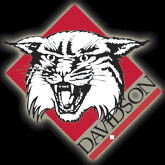
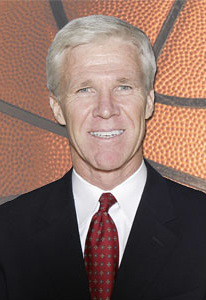
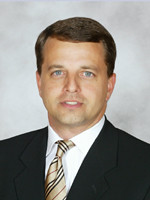

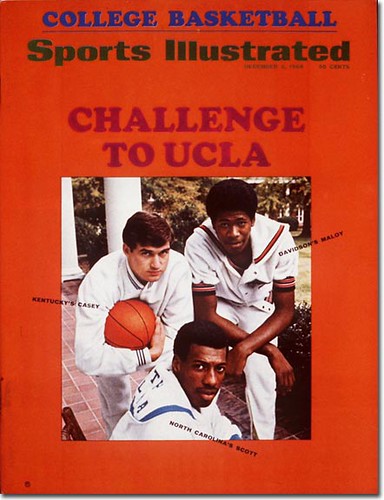
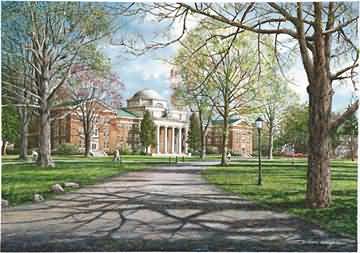
No comments:
Post a Comment